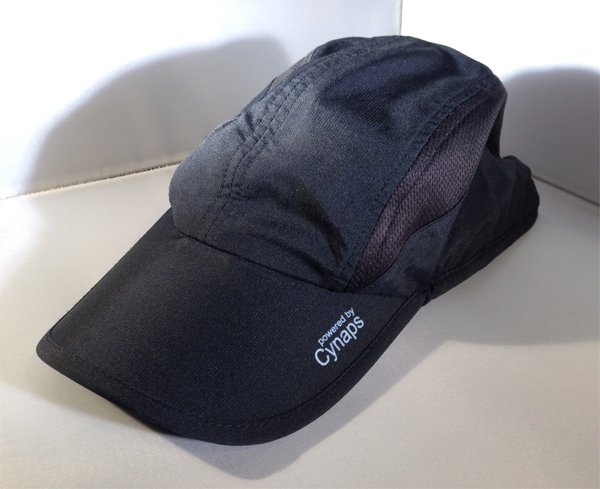This is GizmoMD
Dear Friends, It’s been a while. If you’ve been wondering what happened to Medgadget — you’re not alone. It’s been a few years since anything was published, and like many of you, I’ve missed the excitement of discovering and sharing the latest in…
The Latest
Engineers Develop Same-Day 3D-Printed Zirconia Dental Restorations
Engineers at the University of Texas at Dallas have developed a new method for producing same-day dental restorations using 3D printing and zirconia, a strong ceramic material commonly used for crowns and bridges. This innovation could transform dental care by allowing patients to receive permanent restorations in a single visit, rather than waiting days or weeks. Traditional zirconia restorations require a lengthy process that includes debinding to remove resin binders and high-temperature sintering to harden the material. This can take up to 100 hours, making it impractical for same-day service. The UT Dallas team solved this problem by using porous…
Nanotubes Boost Blood Flow in Engineered Tissues
A team of researchers at Binghamton University has developed a new method to improve blood flow in bioengineered tissues using carbon nanotubes. This advancement addresses a major challenge in tissue engineering: how to ensure that artificial tissues receive enough oxygen and nutrients to survive and function properly. The researchers embedded carbon nanotubes into collagen-based scaffolds to create vascular channels that mimic natural blood vessels. These nanotubes enhance the electrical conductivity and mechanical strength of the scaffolds, helping guide the formation of capillary-like networks. In laboratory experiments, the modified scaffolds supported better growth of endothelial cells, which are essential for forming…
Smartphone Relaxation App Eases Migraine Disability
Researchers at NYU Langone Health have found that a smartphone-based relaxation program can significantly reduce migraine-related disability among patients who seek emergency care for severe headaches. The program, called RELAXaHEAD, guides users through progressive muscle relaxation (PMR), a technique that involves systematically tensing and relaxing different muscle groups to reduce stress and physical discomfort. In the study, 90 patients who visited the emergency department for migraines were randomly assigned to either use the app daily for 90 days or receive standard care without the app. Those who used RELAXaHEAD reported a 34 percent reduction in migraine-related disability, as measured by the Migraine Disability Assessment Scale (MIDAS). They also experienced fewer headache days and improved overall well-being. The app includes audio instructions for PMR, a headache diary, and reminders to encourage consistent use. Researchers observed that patients who engaged with the app more frequently saw greater improvements, suggesting that regular practice of relaxation techniques can help manage migraine symptoms over time. Migraines are one of the most common reasons people visit emergency departments, and they often result in significant disability and missed work or school days. Traditional treatments focus on medication, but behavioral therapies like PMR have shown promise in reducing the frequency and severity of attacks. However, access to these therapies is often limited. By offering a digital solution, RELAXaHEAD provides a low-cost, accessible way for patients to manage their condition outside of clinical settings.
Bioelectronic Mini-Colon Model for Disease Research
A team at the University of California, Irvine has created a three-dimensional artificial colon that closely replicates the structure and behavior of human colon tissue. This innovation combines biological materials with embedded electronics to simulate real-time responses to disease and drug treatments. The model is designed to support research into colorectal cancer, inflammatory bowel disease, and other gastrointestinal conditions, while also enabling personalized medicine approaches. The artificial colon, referred to as the 3D in vivo mimicking human colon, measures approximately 5 by 10 millimeters and includes key anatomical features such as curved surfaces, layered cell structures, and cryptlike indentations. These…
Swallowable Bioprinter Pill Offers New Way to Heal Internal Wounds
A team from the Laboratory for Advanced Fabrication Technologies at École Polytechnique Fédérale de Lausanne (EPFL) has created a miniature device called the Magnetic Endoluminal Deposition System, or MEDS, which functions as a pill-sized bioprinter. Once swallowed, MEDS can be guided through the digestive system using external magnets and activated by a near-infrared laser to release bio-ink directly onto internal wounds such as ulcers or hemorrhages. This approach could eliminate the need for invasive surgery and anesthesia, which are currently required to treat many gastrointestinal injuries. The device is designed like a tiny ballpoint pen. It contains a chamber filled…
Mussel-Inspired Sponge Stops Internal Bleeding
Researchers at Pohang University of Science and Technology (POSTECH) in Korea have created a bioadhesive sponge that can rapidly stop internal bleeding, especially in high-risk surgeries involving organs like the liver or spleen. The sponge combines mussel adhesive protein with decellularized extracellular matrix (dECM) to provide strong tissue adhesion and support wound healing. Traditional hemostatic agents often fail to stick to wet tissue or degrade properly, leading to complications. The POSTECH sponge addresses these issues by adhering firmly to bleeding sites and activating the body’s natural clotting mechanisms. Once bleeding is controlled, the sponge biodegrades safely, while the dECM promotes…
Customizable Finger Brace Supports Injury Recovery
Engineers at Carnegie Mellon University have developed a customizable finger brace that uses 3D printing and embedded sensors to support recovery from hand injuries. The brace is designed to be lightweight, adjustable, and responsive to individual needs, making it suitable for a wide range of rehabilitation scenarios. The device includes soft actuators and sensors that monitor finger movement and provide feedback during recovery. Patients can wear the brace while performing exercises, and the sensors track progress in real time. This data can be shared with therapists to adjust treatment plans and ensure proper healing. One of the key features of…
Wearable Sensor Tracks Vitamin B6 and Glucose in Sweat
A team at Penn State has developed a skin-mounted sensor that can detect vitamin B6 and glucose in sweat, offering a non-invasive way to monitor key health markers. This technology could be especially useful for people with chronic conditions like diabetes, who often experience low vitamin B6 levels and need regular glucose monitoring. Vitamin B6 plays a vital role in immune function and brain health, but current methods for measuring it require expensive and invasive blood tests. The new sensor uses laser-induced graphene nanocomposites combined with molecularly imprinted polymers (MIPs) to selectively bind and detect vitamin B6 molecules. These MIPs…
Microchip Tracks Alzheimer’s in Real Time
Researchers at Concordia University have developed a new microchip that can monitor brain activity related to Alzheimer’s disease in real time. This technology could help scientists better understand how the disease progresses and lead to earlier and more accurate diagnoses. Alzheimer’s disease is a complex condition that affects memory, thinking, and behavior. It develops gradually, often over many years, and is difficult to study because traditional tools only provide snapshots of brain activity. The new chip developed at Concordia changes that by offering continuous monitoring of the brain’s electrical signals and chemical markers. The chip is designed to detect specific…
Wearable Tech Gets Smarter at Detecting Coughs
Researchers at North Carolina State University have developed a more accurate way to detect coughing using wearable health monitors. This innovation could improve how doctors monitor chronic respiratory conditions like asthma and help track symptoms of infectious diseases such as COVID-19 or the flu. Traditional cough detection systems rely mostly on audio recordings. However, these systems often misidentify other sounds, such as speech, sneezes, or throat clearing, as coughs. This leads to false positives and limits the usefulness of the technology in real-world environments. To address this, the NC State team created a system that combines audio data with motion…

















